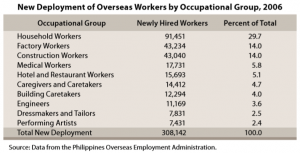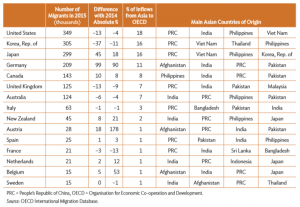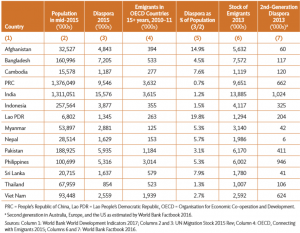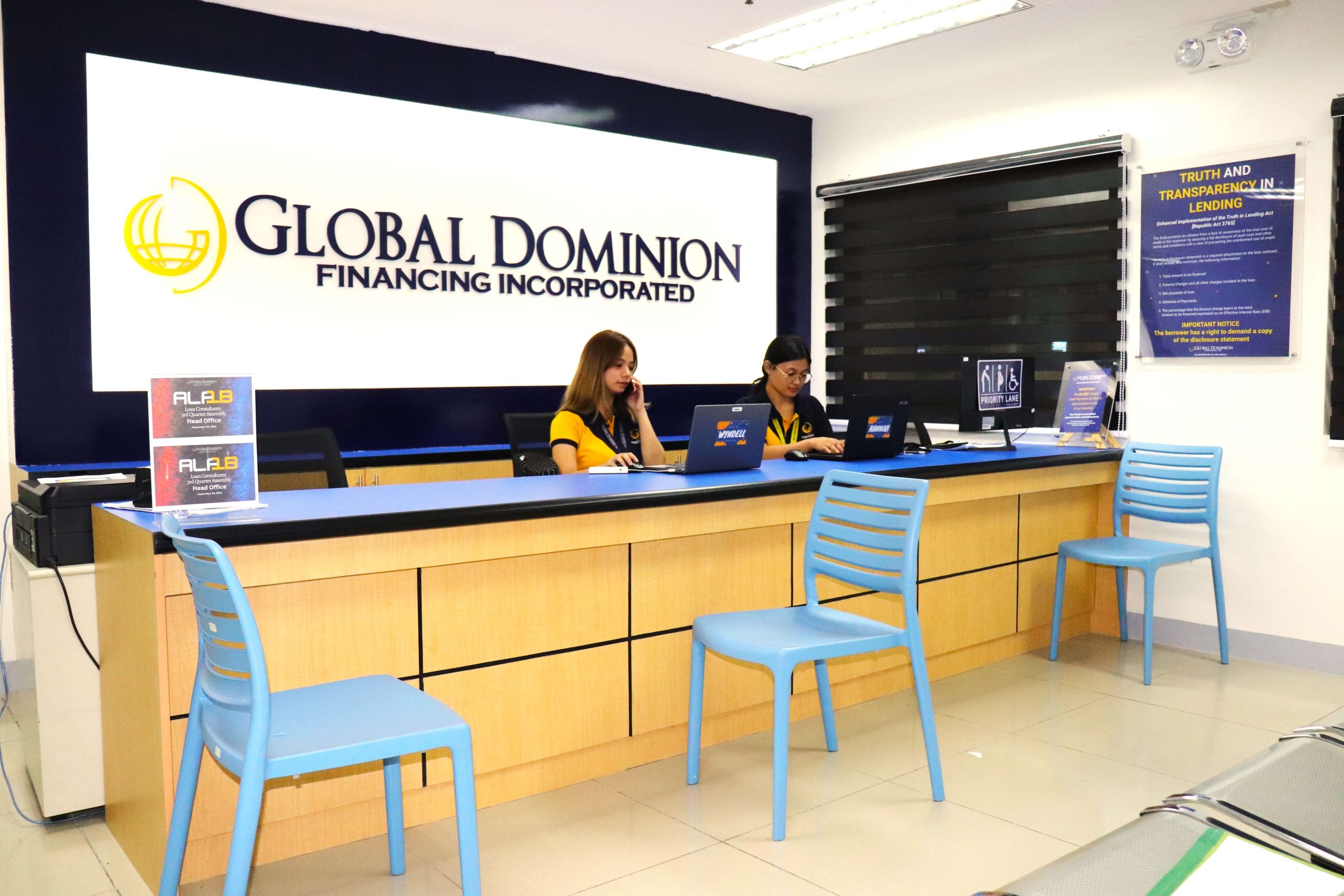Is Out-Migration A Critical Development Constraint in the Philippines?

When we talk about critical economic developmental constraints in the Philippines we can easily point at the financial flow, infrastructure, business climate, and fiscal policies. Human Capital may not be even be at the top of the list, but it certainly is a major factor. Let’s look back and realize that economics in essence is the study of allocation of scarce resources to meet unlimited human wants and needs – and human capital output is considerably men’s biggest contribution to the resources meant to be managed for men. Investopedia defines human capital as an intangible asset or quality not listed on a company’s balance sheet, which can be classified as the economic value of a worker’s experience and skills. This includes assets like education, training, intelligence, skills, and health. One aspect of Human Capital which may be the most popular in the Philippines, is out-migration.
Oxford defines out-migration as the action of leaving one place to settle in another. While it is not difficult to understand for Filipinos and definitely not a new concept to the Philippines, it strikes both as a strength and a risk in line with the increasing globalization and the high-time for us to focus in our country and leverage on natural resources and the growing domestic industries. Now, is out-migration a Philippine critical developmental constraint?
The Philippines occupies a special place in the world of migration and diaspora. It ranks as the third largest source of international migrants. In accordance to the World Bank, it is the fourth largest remittance recipient in the world after India, China and Mexico (imagine just how huge that is, considering the size of our nation). Filipinos can be found in over 200 countries across the globe. From: CFO (Commission on Filipinos Overseas) Secretary Imelda M. Nicolas – “Heroes and Heroines from the Homeland: Migration from a Philippine Perspective”.
Figure 1. Outflows of Workers from Asian Countries, 2007-2016 (Source: ADB – LABOR MIGRATION IN ASIA Increasing the Development Impact of Migration through Finance and Technology)

Data collated and presented by ADB (Figure 1) show the strength of the outflow of labor migration in the Philippines. In 2007 the number of Filipino labor force going out of the country for work was below that of Bangladesh’s and India’s, and just a few counts higher than that of Indonesia’s. And it has been increasing since until 2013 and then took a slight dip in 2014. The Philippines has long been the largest single country of origin of labor migrants in Asia, but the stock of OFWs (Overseas Filipino Workers) declined by 8% in 2016, following the same trend observed in other countries in Asia, like India and Pakistan.
Figure 2. Overseas Filipino Workers (OFWs) Deployments (Source: ADB – Philippine Critical Development Constraint)

Statistics reported by the Philippine Overseas Employment Administration (POEA) suggest that the majority of migrant workers are employed in low technology occupations (POEA 2007). According to the 2006 data, over 80% of the 308,000 newly hired workers were employed in low paying and/or low-skill occupation groups (Figure 2). Less than 4% of new hires were employed in engineering and related occupations.
However, the investor feedback gathered by the Global Competitiveness Report (IMD 2007) also suggests that less than 4% of the investors considered that brain drain may be a problem in the Philippines.
Figure 3. Top 15 OECD Destination Countries for Asian Migration, 2015 (Source: ADB – LABOR MIGRATION IN ASIA Increasing the Development Impact of Migration through Finance and Technology)

The Philippines ranks sixth, with 181,000 new migrants to the OECD (Organization for Economic Cooperation and Development) area in 2015. This represents a 15% increase compared to the previous year. Migration from Vietnam to the OECD area rose even more sharply (+50% between 2013 and 2015) and surpassed 150,000 people for the first time in decades. Nepal had an increase and its highest level of outward migration to OECD countries (47,000 in 2015) in more than 10 years. Bangladesh (51,000) and Myanmar (27,000) also saw a historically high number of their citizens migrating to an OECD country in 2015. Figure 3 shows that the three main OECD destination countries of Asian migrants, the United States (US), the Republic of Korea, and Japan, have not changed ranking in recent years. Canada, which is fifth on the rank, has Filipinos at the top of their foreign workers’ list.
Diaspora – populations of migrant origin who are scattered among two or more destinations, between which there develop multifarious links involving flows and exchanges of people and resources: between the homeland and destination countries and among destination countries (Van Hear, Pieke, and Vertovec, USAID – Philippine Innovation Ecosystem Assessment).
Figure 4. Estimates of Asian Diaspora Populations (Source: ADB – LABOR MIGRATION IN ASIA Increasing the Development Impact of Migration through Finance and Technology)

The table above (Figure 4) displays the emigrant population (15 years old and above) in OECD countries in 2010–2011, are well below the UN figures because they cover only OECD destinations and only those aged 15 and above. Our country is one of the biggest sources of emigrants alongside the PRC, and India.
Figure 5. Stock Estimate of Overseas Filipinos (end of December 2013) (Source: ADB – LABOR MIGRATION IN ASIA Increasing the Development Impact of Migration through Finance and Technology)

The Philippines has generated a large diaspora through successive huge waves of migration to other countries (Lawless 2005). The Commission on Filipinos Overseas (CFO) has estimated the total diaspora at about 10 million. An interesting feature is their breakdown by migration status. Temporary migrants constitute 41% of the total, while irregular status migrants are 11%. The US is the top destination with 3.5 million, followed by Saudi Arabia (1 million), the United Arab Emirates, Malaysia, and Canada.
While the previous labor migration data presented showcase how huge our country’s workforce out-migration is, the next items shall show how vast their positive contribution to the economy is.
Figure 6. Overseas Filipino Workers Remittances (Source: ADB – LABOR MIGRATION IN ASIA Increasing the Development Impact of Migration through Finance and Technology)

Aside from OFW remittances optimistic impact to our community through the effects of foreign exchange rates, the money saved and/or spent in our country certainly contributes to our overall production (see Figure 7 below). Remittances are usually an important source of income in developing countries like ours.
Figure 7. Overseas Filipino Workers Remittances Share In Gross Domestic Product (GDP) (Source: ADB – LABOR MIGRATION IN ASIA Increasing the Development Impact of Migration through Finance and Technology)

The Philippine labor migration’s strength and contribution only made our government continue and improve investment in OFWs and their welfare. But it doesn’t take out the need to take care of the domestic workforce and ensure that we have enough human capital for domestic production and keep migration a positive factor to the economy rather than a threat or risk. Listed hereunder are just a few of the continuing government efforts for both local and overseas Filipino workers, from the following sources: DOLE – Performance Highlights Under The Duterte Administration; NEDA – Philippine Development Plan 2017-2022; and NEDA – SocioEconomic Report 2018.
● Ensuring Strict Compliance to Labor Laws and Labor Standards, particularly the Right to Security of Tenure Executive Order No. 51 Implementing Article 106 prohibiting illegal contracting and subcontracting.
● Encouraging skills development and retooling through continuing education and training.
● Strengthening employment facilitation services.
● Strengthening and expand internship, apprenticeship, and dual training programs.
● Implementing programs that encourage women to participate in the labor market.
● Implementing capacity-building programs should also be conducted for non-agriculture workers who are interested to venture into farming, particularly returning OFWs and senior high school students.
● Gearing up for the Fourth Industrial Revolution (Industry 4.0) by building the country’s science, technology, and innovation ecosystem.
● Implementing the Population and Development program. Besides averting unintended pregnancies, intensify interventions during the first 1000 days of the child to build the capacity to develop the necessary cognitive skills.
● Increasing investments to improve the quality of human capital to meet the human resource requirements under Industry 4.0.
● Improving access of OFs to employment facilitation services and create a registry for returned OFs (e.g., through PhilJobnet, PESO Employment Information System, and e-registration).
● Improving inter-agency coordination such that OFs are promptly referred to and assisted by the right agency for specific service requirements.
● Expanding bilateral and regional ties to diversify and explore prospective destination countries for OFs.
● Establishing labor cooperation agreements for specific category of workers such as household service workers and teachers are also being explored to provide ample protection to OFWs.
All labor is not the same, and therefore, it can be improved and it can also depreciate. Companies inject training and development programs to better their human capital. An economy’s human capital may depreciate if there is high and prolonged unemployment. Geographically, and in most cases this could mean economically as well, human capital can migrate or move outside a particular community or economic zone or boundary. In the case of the Philippines, out migration of human capital isn’t new and it is not something that appears lightly. And as the data suggests, our country’s out-migration is not a critical developmental constraint, at least yet.
It is pertinent, however, that we continue to develop our human capital, especially in emerging industries and build more opportunities domestically so we can also leverage our talent and produce more output at home. If the world benefits from our talent, then it may be better if we benefit from the workforce we mold and develop as well, so that we don’t just gear up Filipinos for the world, but we prepare the Philippines itself as well.





